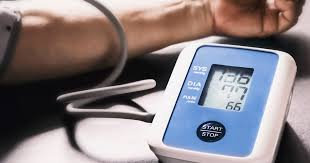
The global wellness wearable market is experiencing incredible growth. People are turning to smartwatches, fitness trackers, and other connected gadgets to keep an eye on their health. These small devices promise a lot of information right on our wrists. They track steps, heart rate, sleep patterns, and even blood oxygen levels. This huge jump in popularity brought many new devices and features. But as this tech gets smarter and more common, a big question comes up: can we really trust the information they give us for health decisions?
Wellness wearables now do more than just count steps. They offer deep looks into our bodies. So, knowing how accurate they are and what they can’t do is super important. Are these devices like real medical tools? Or are they more like simple gadgets with different levels of exactness? This article explores today’s wellness wearable tech. We will look at what makes them reliable and what you need to know before using their data for your health choices.
The Rise of the Quantified Self: Why Wearables Are So Popular
Wearable tech is everywhere now. You see smartwatches on many wrists and fitness trackers at the gym. This demand shows how much we want to understand our bodies better. People are curious about their health numbers more than ever. This trend helps the wellness wearable market grow big. It sets the stage for thinking about how much we can trust these devices.
Beyond the Basics: Evolving Features and Capabilities
Remember when fitness trackers only counted steps? Now, they do so much more. Modern wearables offer advanced health features. They can take an ECG, check blood oxygen (SpO2), and even track your stress. Big names like Apple Watch, Fitbit, and Garmin lead the way. They keep adding new and cool things to their devices. For instance, some smartwatches can alert you to an irregular heart rhythm. This goes way past basic activity tracking.
The “Quantified Self” Movement and its Appeal
The “quantified self” idea is simple. It’s about using tech to gather data on yourself. Wearables let us track our own body data. This gives us a sense of control over our health. Many people want to improve themselves and feel better. Seeing their own health numbers helps them do this. It’s exciting to watch your heart rate during a workout or see your sleep score. This desire for personal insight makes these gadgets very appealing.
Accuracy Under the Microscope: How Reliable is Wearable Data?
This is the main question for many of us. How good is the data these devices give us? Let’s dig into the tech side and what science says. Do these numbers truly tell us what’s happening inside? Or are they just good guesses?
Heart Rate Monitoring: Accuracy and Limitations
Most wearables use optical sensors to check your heart rate. They shine a light onto your skin and measure how blood flows. This is different from an ECG, which uses electrical signals. Optical sensors work well for resting heart rate. But their accuracy can drop during tough workouts. Factors like skin tone, too much movement, or how loose the watch is can throw off readings. Experts say they are fine for general trends, but not always perfect for a sudden, exact reading during intense activity.
Sleep Tracking: Measuring Rest or Guessing?
Sleep trackers often use movement sensors and heart rate data. They try to figure out when you are awake, in light sleep, deep sleep, or REM sleep. This is a tough job. Real sleep studies, called polysomnography, use many sensors and brainwave monitoring. Wearables just don’t have that level of detail. They can give you a good idea of your sleep patterns. But they might struggle to tell the exact difference between sleep stages. So, treat sleep data as a helpful guide, not a medical truth.
Blood Oxygen (SpO2) and ECG: Medical-Grade vs. Consumer-Grade
Some popular wearables now offer SpO2 and ECG features. It’s important to know the difference here. Consumer devices like some smartwatches have these sensors. But they are usually not “medical-grade.” Medical-grade devices go through strict reviews by groups like the FDA. This means they meet high standards for accuracy and safety. For example, some Apple Watch ECG features have FDA clearance. This means they are proven to detect certain heart conditions. However, SpO2 readings on most wearables are for “wellness” use. They are not meant to diagnose serious medical issues. Always check if a device’s feature has regulatory approval. This tells you its intended use and reliability level.
Factors Influencing Wearable Accuracy
Many things can change how accurate your wearable’s data is. It’s not just about the device itself. Your own body and how you use it matter too.
Device Quality and Sensor Technology
The quality of the parts inside a wearable makes a big difference. Cheaper sensors may not be as precise. Better devices often have more advanced algorithms. These are like smart computer programs that help read the data. An optical heart rate sensor on a premium smartwatch might give more stable readings than a basic fitness band. The type of technology used, whether it’s optical or electrical, also plays a part in its typical accuracy.
User Factors: Fit, Activity, and Physiology
Your body and how you wear the device affect readings. If your wearable is too loose, it won’t get a good signal. Too much body hair or certain skin tones can also interfere with optical sensors. Even the type of exercise you do matters. A steady walk is easier to track than a high-intensity interval training session. Your physiology, like how much you sweat, can also impact sensor performance.
Software Updates and Algorithm Refinements
Think of your wearable like a tiny computer. Its software often gets updates. These updates can make the sensors work better. They can also improve the algorithms that interpret the raw data. A device might not be perfect when it first comes out. But manufacturers often release updates that boost its accuracy over time. This shows a commitment to making the data more trustworthy.
What the Experts Say: Research and Validation
It is not just about what manufacturers claim. What do independent studies and healthcare professionals think? Their insights help us understand the real picture.
Scientific Studies and Peer-Reviewed Research
Many scientific studies have tested popular wellness wearables. Researchers often compare them to “gold standard” medical devices. For heart rate, studies usually find wearables are fairly accurate at rest. They can be less so during intense movement. For sleep, wearables tend to be good at telling if you’re asleep or awake. But they struggle more with exact sleep stages, compared to a full lab sleep study. For features like ECG, FDA-cleared devices often show high accuracy for detecting specific heart rhythm issues. This research helps us know what to expect from our gadgets.
Insights from Healthcare Professionals
Doctors and specialists often see the value in wearables. Cardiologists may suggest using a smartwatch to track irregular heartbeats, if it has an FDA-cleared ECG. Sleep specialists sometimes recommend wearables for tracking general sleep patterns. They might use this data to start a conversation about habits. But they always stress that these devices are not for diagnosis. They are tools that can prompt a visit to the doctor. Sports scientists might use them for training, seeing trends in performance and recovery.
Regulatory Bodies and Their Role
Groups like the FDA in the United States play a crucial part. When a wearable feature gets FDA clearance, it means it has been tested. It has shown it can do what it claims. This is why you will see some devices advertise FDA-cleared ECG. This clearance means a basic level of accuracy and safety for that specific health function. It’s a sign that the feature is more than just a guess.
Making Informed Decisions: Actionable Tips for Wearable Users
So, how can you use your wearable’s data smartly? Here are some simple tips to help you get the most out of your device.
Understanding Your Device’s Capabilities and Limitations
Every wearable is different. Take time to read about your specific model. Know what features it has and what they are designed to do. Is its SpO2 feature for general wellness or medical use? Does its ECG look for all heart issues or just specific ones? This info is usually in the manual or on the company’s website. Knowing these details helps you use the data wisely.
Using Wearable Data as a Trend Indicator, Not a Diagnosis
Think of your wearable as a helpful health diary. It shows you trends over time. Is your resting heart rate slowly going up? Are your sleep patterns changing a lot? These trends are valuable clues. They can encourage you to check with a doctor. But never use wearable data to diagnose yourself. It is not a substitute for a doctor’s visit or medical tests.
When to Consult a Healthcare Professional
Your wearable can be a warning sign. If you see very high or low heart rates that last, or big changes in your sleep, talk to a doctor. If your device with an approved ECG feature warns you of an irregular rhythm, get professional advice. These devices are great for spotting things that need a doctor’s attention.
Comparing and Cross-Referencing Data
Want to feel more confident about your readings? Try checking them against other sources. You can manually take your pulse to compare with your wearable’s heart rate. Or if you have another device, see if the numbers generally align. This can help you understand how consistent your wearable is.
The Future of Wellness Wearables: Improving Reliability and Integration
The world of wearables is still growing fast. We can expect even better, more accurate devices in the years to come.
Advancements in Sensor Technology and AI
Scientists are always working on new sensors. They are looking into ways to track more health signs, like continuous glucose monitoring. Artificial intelligence (AI) is also getting smarter. AI can help process sensor data more precisely. This means future wearables could give us even clearer and more reliable health insights. Imagine a device that understands your body even better, thanks to smarter tech.
Greater Integration with Healthcare Systems
Right now, your wearable data usually stays on your phone. But in the future, it might link directly to your doctor’s office. This could mean your healthcare team gets a fuller picture of your health. It would help them make more personalized plans for you. This seamless sharing could lead to more proactive and tailored care.
The Evolving Role of Wearables in Preventative Health
As wearables get more reliable, they will play a bigger role in keeping us healthy. They could help detect issues much earlier. Imagine a watch that notices a subtle change in your vitals before you even feel sick. This kind of early warning system could revolutionize preventative health. It could help us catch problems when they are easier to treat.
Conclusion: Embrace the Data, But Stay Grounded
Wellness wearables are truly amazing tools. They let us track our health in ways we never could before. They are getting smarter and more powerful every year. But it is important to remember what they are good for and what they are not. They are excellent for spotting trends and encouraging healthier habits. They are not meant to replace your doctor.
Key Takeaways:
- Wellness wearables offer impressive and growing capabilities.
- Their accuracy varies a lot, depending on the device, feature, and individual user.
- They are great for tracking personal health trends. They are not for self-diagnosis or medical advice.
- Understand what your device can and cannot do. Always talk to a doctor about health worries.
- The future promises even more accurate and connected wearable health tech.
Discover more from Healthinfo24.com
Subscribe to get the latest posts sent to your email.



Horace892
https://shorturl.fm/0LjIg